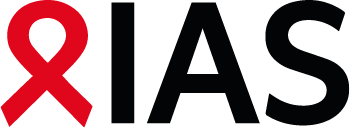Share Abstract
Providing same day, observed ART to newly diagnosed HIV+ outpatients is associated with improved virologic suppression
Abstract Content:
Background: Despite known clinical and prevention benefits, ART is typically delayed by weeks-to-months after HIV diagnosis to allow linkage to care, HIV education, social stabilization and laboratory evaluation. The UCSF/San Francisco General Hospital (SFGH) RAPID program aimed to eliminate this delay by providing same-day/observed ART even as HIV care was being established. We investigated consequences of the RAPID treatment initiation strategy.
Methods: RAPID eligibility included new HIV diagnosis with acute/recent infection, active opportunistic infection or CD4< 200/mm3. At referral, all RAPID-eligible or -ineligible patients with new diagnosis received a standard package of multidisciplinary services for social support, education, risk and stigma reduction; labs were drawn; and regular provider follow-up was arranged. The RAPID intervention consisted of 1) same-day access to an on-call provider; 2) a 5-day ART supply facilitated by 3) an accelerated process for insurance benefits. Focusing on a July 2013-Dec 2014 program period, survival analysis was used to compare time to achieving VL< 200 copies/mL between patients receiving or not receiving the RAPID intervention, and also between these patients and historical controls from two eras of ART provision at SFGH: pre-RAPID universal (2010-2013) and CD4-guided (2006-2009).
Results: We studied 227 newly diagnosed outpatients receiving RAPID (n=39), universal (n=149) or CD4-guided (n=39) ART. No patients had private insurance and 27% were homeless; mean(range) CD4 was 381(2-1031)/mm3 and VL 4.6(1.6-7.0)log10cp/mL. Time to VL< 200 cp/mL was significantly faster in RAPID patients vs. both contemporaneous and historical controls (p< 0.001; see Figure).
![[pic_01] Viral suppression over time by ART initiation strategy](http://www.ias2015-abstracts.org/pictures/p_729_00648.png)
[Viral suppression over time by ART initiation strategy]
Median(IQR) time to VL< 200 for RAPID ART was 56(40-87) days vs. 119(58-201) days for universal and 283(128-777) days for CD4-guided ART. After 3 months of ART, 75% RAPID vs. 38% non-RAPID patients achieved a VL< 200 cp/mL; after 6 months, 95% RAPID vs. 70% non-RAPID patients achieved VL< 200 cp/mL. Among the first 39 patients receiving RAPID ART and followed for 5-18 months, only 2 (5%) of had toxicity-related regimen changes, none discontinued ART and 35 (90%) remain engaged in care.
Conclusions: Combined with patient education and psychosocial support, same day-observed initiation of ART at the time of HIV diagnosis was feasible and associated with substantially faster sustained viral suppression.
Methods: RAPID eligibility included new HIV diagnosis with acute/recent infection, active opportunistic infection or CD4< 200/mm3. At referral, all RAPID-eligible or -ineligible patients with new diagnosis received a standard package of multidisciplinary services for social support, education, risk and stigma reduction; labs were drawn; and regular provider follow-up was arranged. The RAPID intervention consisted of 1) same-day access to an on-call provider; 2) a 5-day ART supply facilitated by 3) an accelerated process for insurance benefits. Focusing on a July 2013-Dec 2014 program period, survival analysis was used to compare time to achieving VL< 200 copies/mL between patients receiving or not receiving the RAPID intervention, and also between these patients and historical controls from two eras of ART provision at SFGH: pre-RAPID universal (2010-2013) and CD4-guided (2006-2009).
Results: We studied 227 newly diagnosed outpatients receiving RAPID (n=39), universal (n=149) or CD4-guided (n=39) ART. No patients had private insurance and 27% were homeless; mean(range) CD4 was 381(2-1031)/mm3 and VL 4.6(1.6-7.0)log10cp/mL. Time to VL< 200 cp/mL was significantly faster in RAPID patients vs. both contemporaneous and historical controls (p< 0.001; see Figure).
![[pic_01] Viral suppression over time by ART initiation strategy](http://www.ias2015-abstracts.org/pictures/p_729_00648.png)
[Viral suppression over time by ART initiation strategy]
Median(IQR) time to VL< 200 for RAPID ART was 56(40-87) days vs. 119(58-201) days for universal and 283(128-777) days for CD4-guided ART. After 3 months of ART, 75% RAPID vs. 38% non-RAPID patients achieved a VL< 200 cp/mL; after 6 months, 95% RAPID vs. 70% non-RAPID patients achieved VL< 200 cp/mL. Among the first 39 patients receiving RAPID ART and followed for 5-18 months, only 2 (5%) of had toxicity-related regimen changes, none discontinued ART and 35 (90%) remain engaged in care.
Conclusions: Combined with patient education and psychosocial support, same day-observed initiation of ART at the time of HIV diagnosis was feasible and associated with substantially faster sustained viral suppression.
